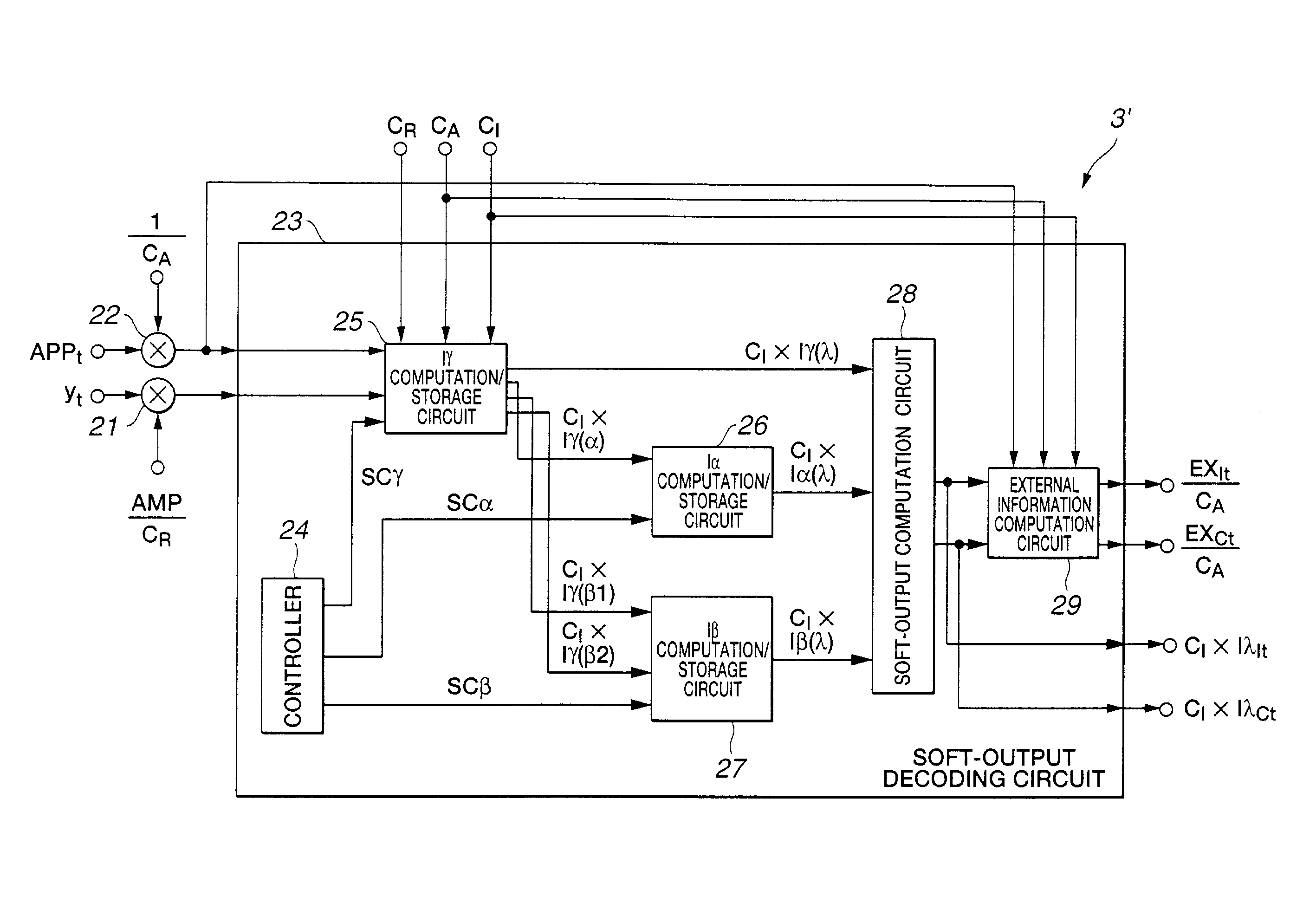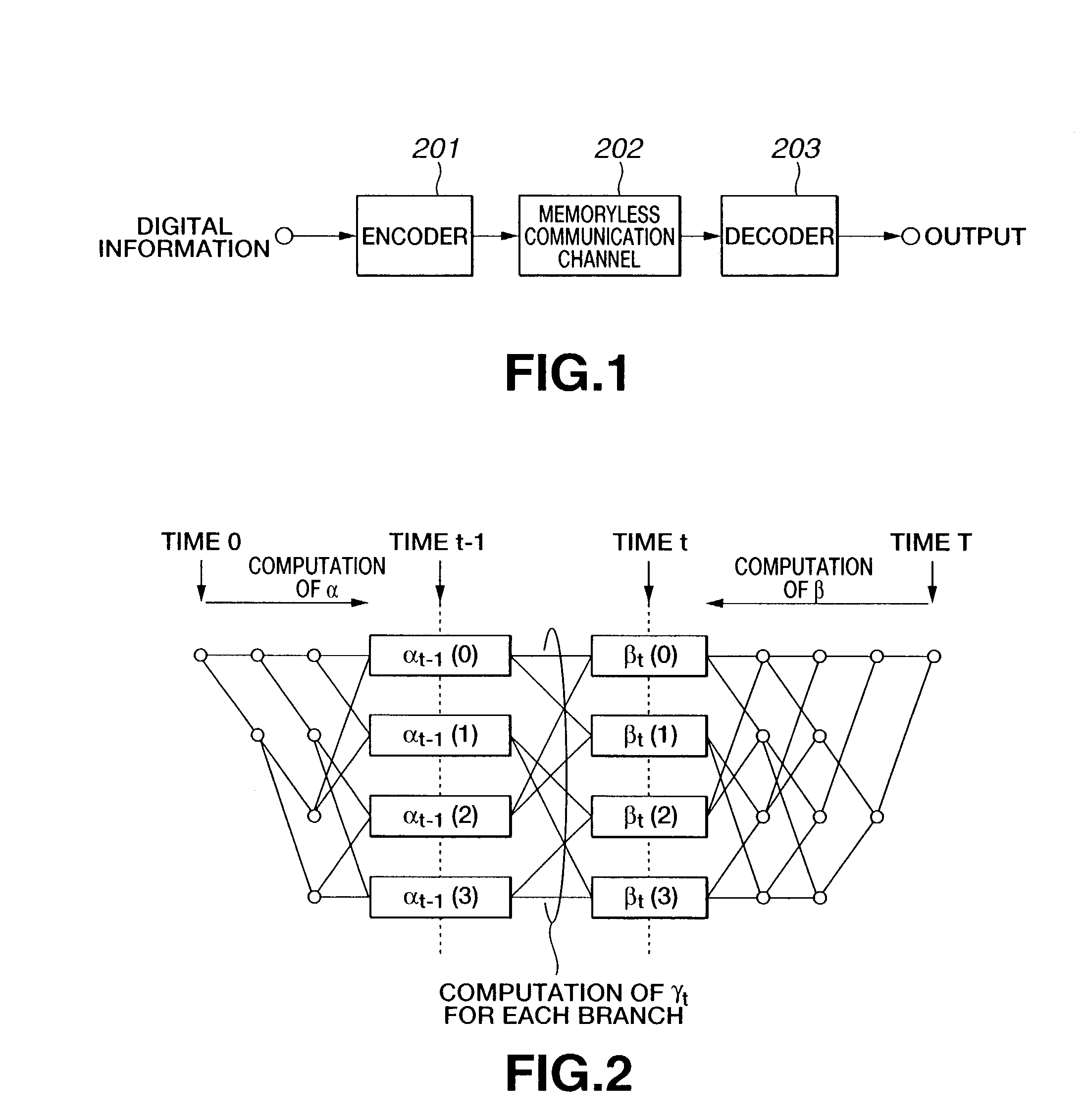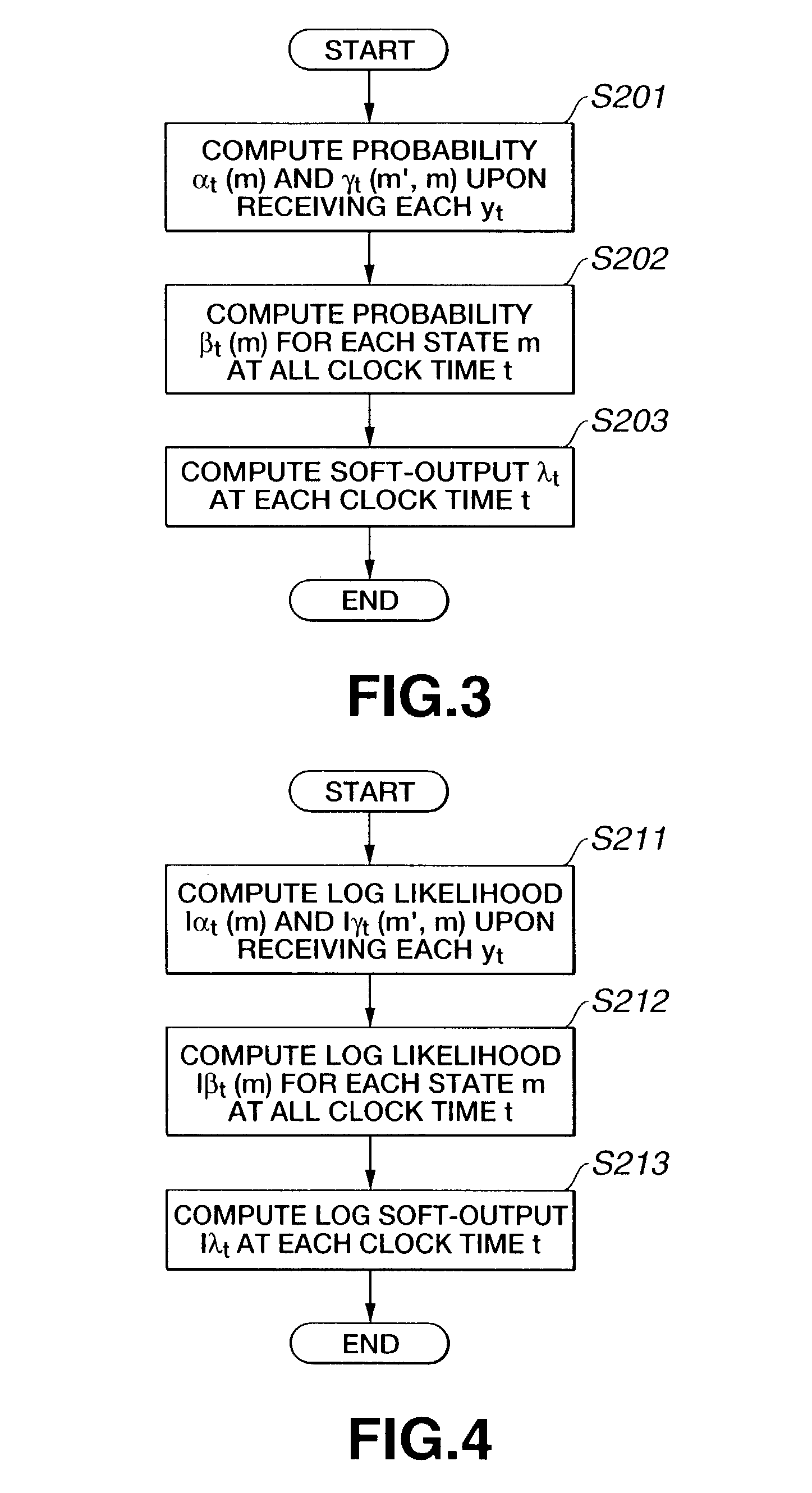Decoder an decoding method
a decoding method and softoutput technology, applied in the direction of coding, error correction/detection using convolutional codes, error correction/detection using turbo codes, etc., can solve the problem of difficult to accurately limited quantization range, and difficult to determine the log likelihood isub>t/sub>
- Summary
- Abstract
- Description
- Claims
- Application Information
AI Technical Summary
Benefits of technology
Problems solved by technology
Method used
Image
Examples
Embodiment Construction
[0112]Now, the present invention will be described in greater detail by referring to the accompanying drawings that illustrate a preferred embodiment of the invention.
[0113]Referring firstly to FIG. 10, this embodiment is applied to a data transmission / reception system, in which having encoder 1 of a transmitter (not shown) encodes digital information and transmits it to a receiver (not shown) by way of a memoryless communication path 2 having noise so that the transmitted code is decoded by decoder 3 of the receiver.
[0114]Of the data transmission / reception system, the decoding operation of the decoder 3 for decoding the code encoded by the encoder 1 is a maximum a posteriori probability (to be referred to as MAP hereinafter) decoding operation that is conducted on the basis of the Max-Log-MAP algorithm or the Log-MAP algorithm (to be referred to as Max-Log-BCJR algorithm or Log-BCJR algorithm, whichever appropriate, hereinafter) as described in Robertson, Villebrun and Hoeher, “A c...
PUM
 Login to View More
Login to View More Abstract
Description
Claims
Application Information
 Login to View More
Login to View More - R&D
- Intellectual Property
- Life Sciences
- Materials
- Tech Scout
- Unparalleled Data Quality
- Higher Quality Content
- 60% Fewer Hallucinations
Browse by: Latest US Patents, China's latest patents, Technical Efficacy Thesaurus, Application Domain, Technology Topic, Popular Technical Reports.
© 2025 PatSnap. All rights reserved.Legal|Privacy policy|Modern Slavery Act Transparency Statement|Sitemap|About US| Contact US: help@patsnap.com



